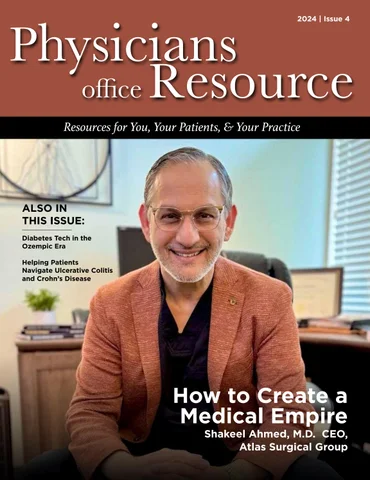Navigating the Complex Maze of Apps
Tuesday, July 14, 2020
by David Kliff of the Diabetic Investor
There is no question that the COVID pandemic has forever changed healthcare. Telemedicine, virtual patient consults and increased use of remote patient monitoring are just some of the byproducts of the pandemic. As welcome as some of these changes are they have also brought with them some new concerns. This is particularly true in the area of chronic disease management. Physicians have always been acutely aware that their patients with chronic diseases such as diabetes have the additional burden of monitoring their condition.
In the old days before all the gizmos a patient used communicated with their smartphone, patients with diabetes would record their glucose readings in an old-fashioned logbook. There were no such thing as connected insulin pens or continuous glucose monitoring systems which not only collected data but shared this data with an app, which in turn then could be shared with their physician.
This new world on interconnected devices brings with it some promise and some peril. In theory all this connectivity can help the patient more effectively manage their diabetes. Using connectivity the patient can easily share all this information with their physician who in turn can then better advise the patient. Thanks to COVID physicians can now more easily bill for these virtual consultations. Still there is little uniformity in how all this data is presented or transmitted. Nor are there any standards or restrictions on how these apps communicate with the user.
The last thing any physician needs is for an app to be telling the patient one thing, when they are telling the patient something else. To our knowledge there is just one diabetes app which has received FDA approval, Diabetes Manager by WellDoc. This basically means when it comes to the plethora of diabetes apps choosing which one is best for your patients with diabetes is pretty much like rolling the dice on a crap table.
To help navigate this complex maze here are some simple tips that will help enhance the physician patient relationship.
- Is an app needed in the first place?
This may seem like a dumb question but in reality there are some patients who don’t need or don’t want to deal with all this way cool whiz bang technology. Just by way of example a Type 2 patient on oral medication(s) alone may see an app as overburdensome. Sure it would be nice to know how their glucose levels are trending but any changes to their therapy regimen are more likely to be based on a multiplicity of factors including their most recent HbA1c.
- What information is needed?
To a great extent this question is also answered by the patient’s therapy regimen. Is the patient following intensive insulin therapy? Or are they using insulin plus orals? Keep in mind that glucose data is not the lone data point that can be collected by an app. Given the importance of food intake there are a host of apps which allow the patient to record meal intake. There are also several apps which record the patient’s weight, blood glucose monitors and CGM’s aren’t the only devices which send data to apps.
- Is data all that’s needed or should coaching be included?
One thing most of these apps are very good at is data collection. However there are an equal number which go beyond mere data collection and apply analytics to all this data. These analytical apps can provide valuable insight into how the patient is managing their diabetes.
Recently a bundle of apps have gone well beyond data collection combined with data analytics. These newer apps have entered the world of patient coaching offering the patient tips on how they can more effectively manage their diabetes. Using text messaging these apps can send these tips directly to the patient bypassing any physician input or oversight.
- Is this information safe?
It would be foolish in today’s world to ignore the security of a patient’s personal health information and these apps are no different. Several studies have noted that cybersecurity or the fear of information being hacked is the number one concern for patients. Given that there are no universal standards which govern how these apps should protect all this data this is a very legitimate concern. While we would not go as far and state that it’s the wild west out in diabetes app land without any uniform standards combined with the complexity of factors involved we don’t see this concern going away.
- What’s the goal?
Again this seems like a stupid question as the default response is better patient outcomes. Yet the real consideration is will use of these apps achieve this goal. Here too there are numerous studies which unfortunately draw different conclusions. Some studies have concluded that these apps help strengthen the doctor patient relationship providing more productive interactions. Others however have concluded that as helpful as all this information can be this avalanche of information creates more questions.
There is no question that apps are here to stay and will see greater usage. The real yet unanswered question is will use of these apps lead to better outcomes. Will patients and their physicians embrace this technology, or will they become another diabetes tool that goes unused?
On balance we see more positives than negatives however we continue to believe that it’s not about the toys in the toy chest. That it’s all about getting the patient to play with the toys.

